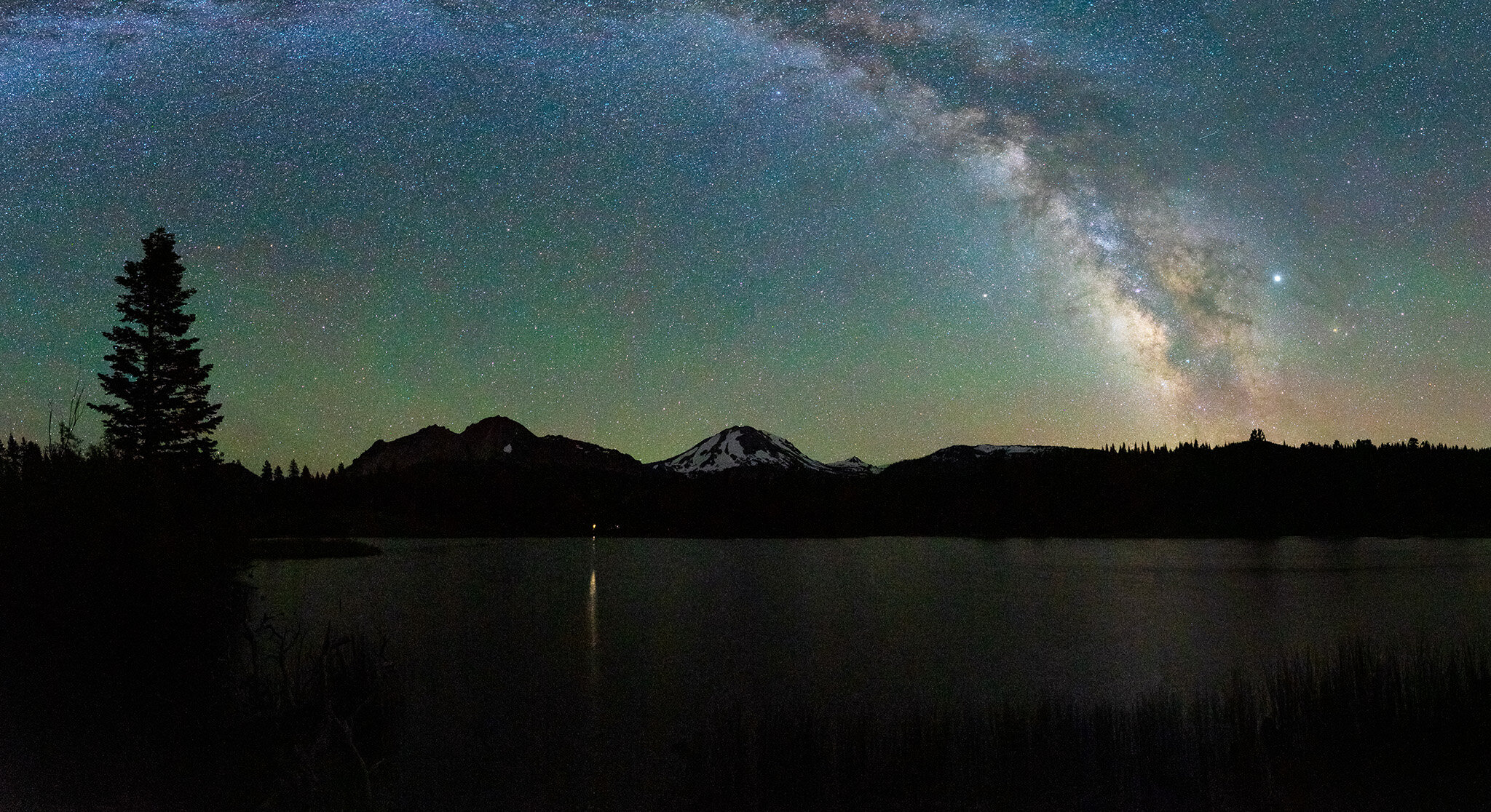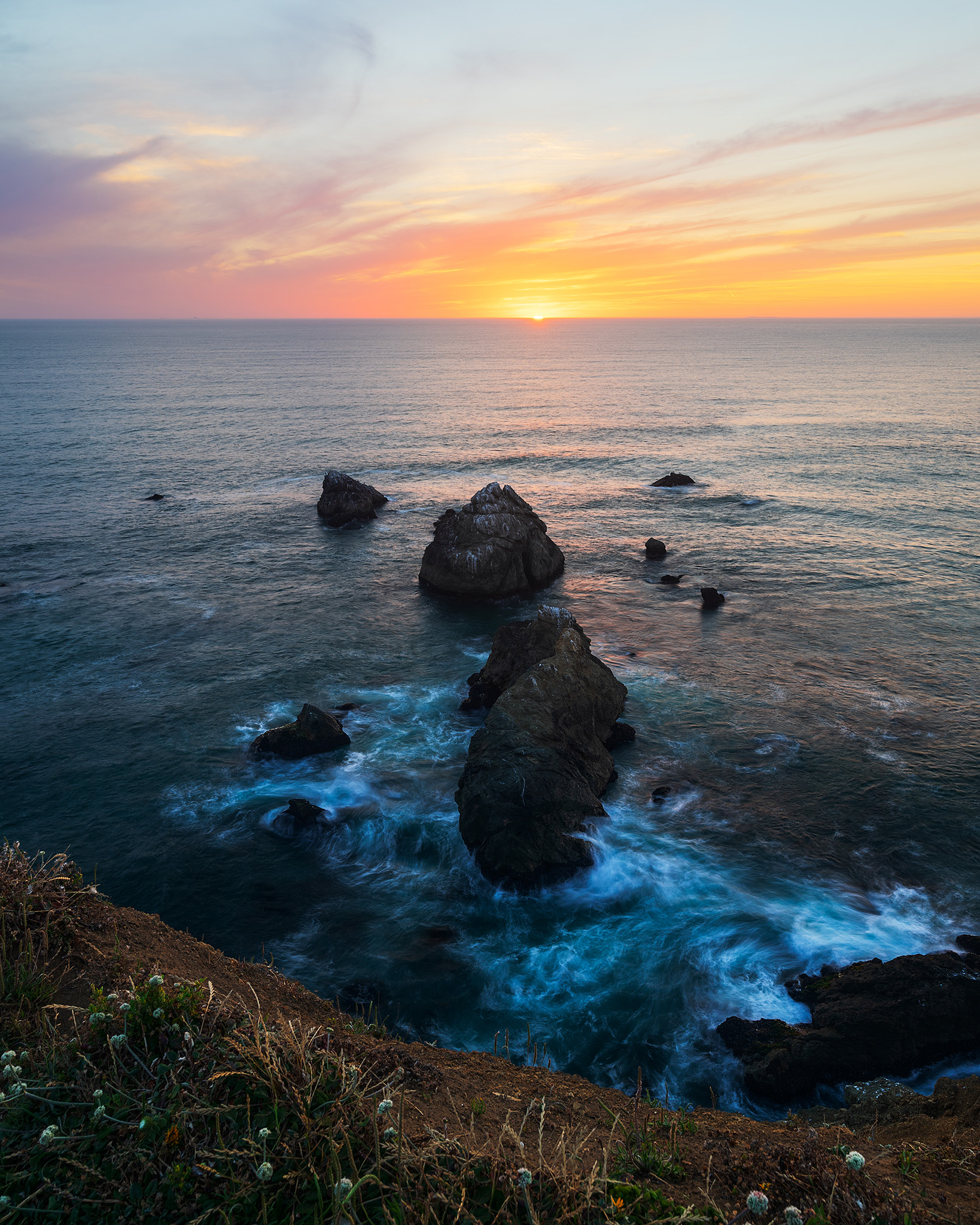How to use a Wide Angle Lens?
Milky Way over Lassen Peak | Sony Alpha a7 II + 16-35mm f/2.8 GM @ 16mm, f/2.8, ISO 4000, 15 sec, panorama
While it is the photographer who takes the photo, new gear can not only enable the photographer to take higher quality photos, but it can enable a whole new world of possibilities. And for me, purchasing a fast, ultra wide angle lens two years ago allowed me to capture new types of photos that I previously could not have. Specifically, I purchased the Sony 16-35mm f/2.8 GM lens – Sony’s professional grade ultra wide angle zoom lens – which, by the way, has held up to the elements very well. But regardless of what wide angle lens you have, here are some of my favorite ways to use my wide angle lens for landscape photography.
Perseids Meteor Shower at Pinnacles National Park | Sony Alpha a7 II + 16-35mm f/2.8 GM @ 16mm, f/2.8, ISO 3200, 15 sec, stack and blend
So, shortly after purchasing my Sony 16-35mm lens, my family headed down to Pinnacles National Park for some hiking and stargazing. It was during the peak of the Perseids Meteor Shower in 2018, and it was important to use a wide angle lens in this situation so that I could capture more of the night sky in one frame. This allowed me to capture more of the milky way in addition to having a wider area of the sky to increase my chances of capturing some of the shooting stars (also known as the meteors from the meteor shower).
While you might argue that you could take a panorama instead of using a wide angle lens (and I love doing panoramas including the first image in this blog post), it is not possible to capture things in motion with a panorama such as crashing waves or meteors. Additionally, if you want to use your lens for time-lapse, video, or another genre of photography with moving subjects, then you will definitely be happy to have the ability to use a wide angle lens instead of trying to do a panorama every time you want a wide field of view.
Coastal Sunset | Sony Alpha a7 II + 16-35mm f/2.8 GM @ 16mm, f/11, ISO 100, 1/10 - 0.8 sec
Colorful Sunset along the California Coast | Sony Alpha a7 II + 16-35mm f/2.8 GM @ 23mm, f/11, ISO 100, 1/5 - 1.6 sec
Secondly, one of the important things in photography is composition. And having a good foreground in your photo helps anchor your photo in addition to leading your viewer’s eyes through the photo or towards your subject. So, using a wide angle lens can help bring in more of the foreground into your photo. For example, these two seascape photos above would be far less interesting if I had zoomed in and only captured the clouds and horizon. Because I included a foreground in these photos, I am able to help frame the subject and guide the viewer’s eyes into the photo and towards the subject.
When you are out taking photos, remember to think about your foreground because it will enable you to create more depth and interest in your photo. A good thing to look for in a foreground are things that can provide interesting textures or patterns, leading lines, complementing colors, etc. The last thing you want to do with a wide angle lens is to distance the viewer from the subject because you are too far away and have no foreground to anchor your photo. Or in other words, do not just zoom all the way out because you can.
Sand Formations | Sony Alpha a7 II + 16-35mm f/2.8 GM @ 17mm, f/22, ISO 100, 1 sec with Syrp ND filter
Building off the last idea, a wide-angle lens can allow you to get really close to your foreground while still maintaining a large field of view of the surrounding environment. This can enable you to really emphasize a smaller subject in the foreground while still capturing the beautiful scenery surrounding it. So, by changing your perspective of your camera to be super close to your foreground subject, you can make it appear larger than life in the final photo. This is a very helpful thing to think about when it is hard to find a very interesting subject. In my case, the one obvious subject on this beach did not have great light, so I was aimlessly wandering along this beach in Morro Bay until I stumbled upon this rock stuck in the sand.
Behind the scenes - my Sony Alpha a7 II and 16-35mm GM lens up close with my subject
In the photo above, you can see that I placed my camera as low as my tripod could go and only about a foot away from my subject. It is definitely helpful to have a sturdy tripod that can go really low in this case. My Manfrotto tripod can remove the center column in addition to flipping the center column upside down. Additionally, you can use the natural distortion of the wide angle lens to your advantage. Since the camera is so close to the subject, the objects in the corners of your photo will get stretched. In this case, the distortion works well since the lines in the sand help create nice leading lines to draw the viewer into the photo and towards the subject.
Also, you should keep in mind your focus when you are working with a subject very close to your camera. In my case, I had to do a two photo focus stack with the lens at f/22. To merge the photos, you could use a specialized software to merge the focus stacked images together, but I just used Photoshop with a layer mask to blend them together. As with a lot of photography lenses, I also had to align my images because my lens does have some focus breathing. If Photoshop’s Auto Align feature does not work, you can always set the top layer’s blending mode to “Difference” to help you manually align the photos.
Finally, while not exactly specific to using a wide angle lens, using an ND filter enables the ability to take a longer exposure which can help simplify moving water or cars in your foreground. This is a nice thing to keep in mind as a long exposure on water or cars can help create leading lines in addition to blurring out distracting objects that might have otherwise got unwanted attention in the final image.
Thank you for reading my blog post, and I hope that you have learned a little something from my experiences. Let me know your thoughts or the next topic I should write about next time.





